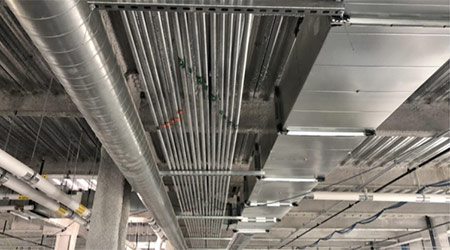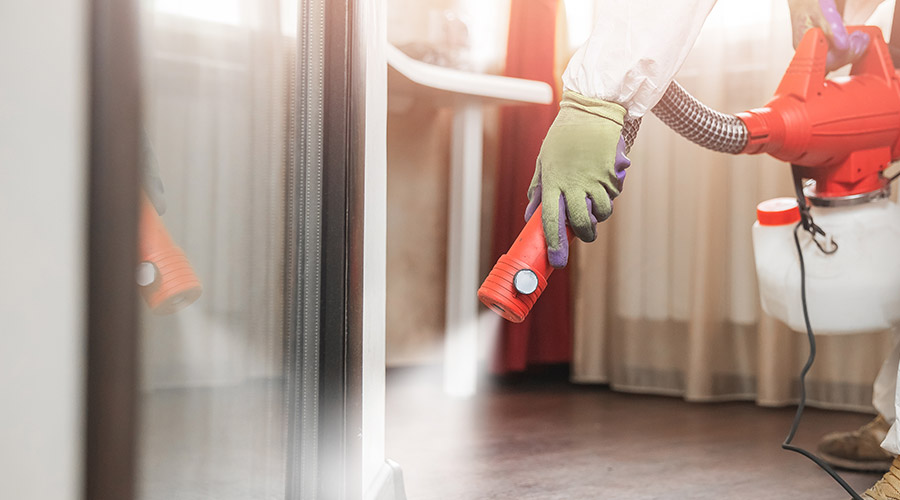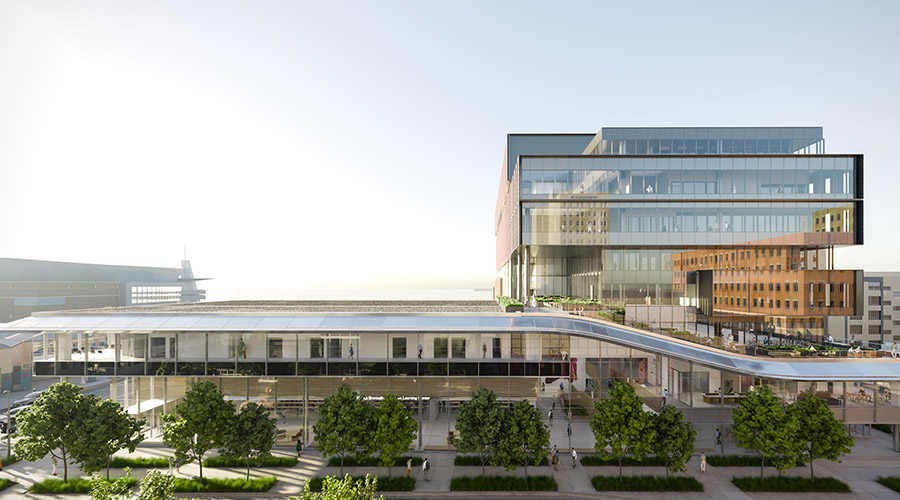America’s healthcare facilities have transformed in recent decades, driven by technological advances, evolving compensation models and ever-rising standards for patient care. And while many of these changes are visible (think daylighting, vegetative roofs, etc.), many are undetected - -for example the mechanical systems underlying a building.
The insulation wrapping these systems plays an integral role in ensuring optimal performance of a building’s mechanical systems. The Regional Health Rapid City Hospital expansion in the Black Hills of South Dakota provides a good example.
The hospital expansion is a phased project that includes new construction and renovations. The two-and-a-half year project kicked off in 2017 with completion slated for 2020. Renovations include significant expansion of the hospital’s Emergency Department as well as additional in-patient services. Just as the hospital delivers a breadth of services ranging from routine wellness exams to complex medical procedures, the systems within the building are quite diverse presenting unique challenges for the teams undertaking the project. Pipe insulation played an important role in helping meet several key objectives on the project. Five of these performance attributes driving the decision are noted below:
1. Moisture resistance: An especially important consideration for the expansion project was avoiding construction materials that could be conducive to moisture infiltration. “The team overseeing the renovations was aware that if the Owens Corning SSL II® with ASJ Max Fiberglas™ Pipe Insulation polymer jacket was exposed to moisture, it would resist water intrusion,” said Steve Venteicher of L&L Insulation, the insulation contractor for mechanical systems. Mike Erhart, territory manager of API Distribution noted the manufacturer was important in communicating the importance of using a pipe insulation with a polymer exterior jacket in a healthcare setting. “Initially, the hospital had an open spec on this project, but the manufacturer helped educate the team about the benefits of the polymer jacketing, which is really important in a healthcare environment where you want to avoid mold and always promote the highest standard of safety,” Erhart said.
2. Jacketing material matters: Rapid City Hospital selected the pipe insulation in part because of its unique jacket which is smooth, durable, cleanable, and wrinkle-resistant. Of particular importance to the team was how easy the polymer film was to wipe down. “Insulation typically happens early on in a renovation and so you have to think about construction dirt and dust. The film was easy to clean and did a good job of staying clean even during a long period of construction,” said Bryan Bergquist, Area Sales Manager at Owens Corning.
3. Variety of thicknesses: Multiple systems in the hospital made it important for insulation to be available in a variety of thicknesses. For example, the hospital’s cold water pipes required a ½ inch thickness, hot water pipes required a 1” thickness and chilling pipes required a 1.5” thickness. Available in thicknesses up to 5”, ASJ Max FiberglasTM pipe insulation made it easy to specify the right thickness for the various systems operating in the hospital.
4. Secure Fastening: Another important factor in selecting the right insulating material was assuring the insulation would stay firmly fastened and not come loose after it was installed. The ASJ Max FiberglasTM pipe insulation answered this challenge with an advanced double adhesion fastening SSL II system requiring no staples or mastic to install. “Sealing the systems with SSL II double adhesive meant we did not have to worry about seams coming loose. It was an extra measure of confidence,” Venteicher said.
5. Jobsite Ease: Ease of installation was another factor favoring ASJ Max FiberglasTM as the hospital changed from its previous insulation. L&L Insulation provided the team with an opportunity to try the material before the install began so workers felt comfortable with the insulation. During the peak of the install period, up to 15 team members were busy insulating pipes.
Beyond product performance, Venteicher and Erhart cite other project management considerations that led to a successful project. Not the least of these was frequent and thorough communication. “Communication cannot be emphasized enough,” Erhart said. The distributor, insulation contractor, general contractor and insulation manufacturer scheduled regular meetings as each portion of the project was addressed.
Staying flexible was also important, as multiple changes on the project meant teams would need to re-order the location of work and switch the delivery of various material thicknesses dictated by these challenges. API Distribution credits well planned logistics and communication with helping it manage changes to material delivery and storage during the job. “We were working with a broad inventory of material and we had to stay flexible when it came to storing materials that were originally scheduled to install earlier and then had to be rescheduled for later install due to changes in the production calendar,” he said.
As patients and visitors residing in the beautiful Black Hills region of South Dakota enjoy the new renovations, ASJ Max provides an attractive approach to insulating the building’s hard-working mechanical systems.

 Barriers to Infection: Rethinking Mattress Cleaning
Barriers to Infection: Rethinking Mattress Cleaning Over 1 Million Individuals Affected in Community Health Center Data Breach
Over 1 Million Individuals Affected in Community Health Center Data Breach Prospect Medical Holdings to Sell Crozer Health to Non-Profit Consortium
Prospect Medical Holdings to Sell Crozer Health to Non-Profit Consortium The Top States for Pest Infestations
The Top States for Pest Infestations Ground Broken on Wichita Biomedical Campus Project
Ground Broken on Wichita Biomedical Campus Project